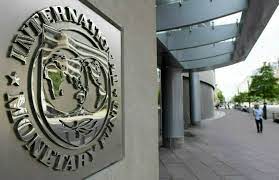The government that comes into office after the general elections next month will be faced with serious environmental, economic, and epidemiological challenges. Given the enormity of challenges at hand, this perhaps could be the most important election for the country. With recent years showing the fast unfolding of the climate change crisis, its broadly understood link with the ‘Pandemicene’ phenomenon creating the urgent need to strengthen the public health sector, including drastically enhancing the capacity to manufacture vaccines, especially given the wide practice of vaccine apartheid during the Covid pandemic.
Then there is the urgent need to move away from an otherwise over-board practice of austerity policies accentuating debt distress on one side, while making it difficult to make development or welfare spending at a time when the Covid pandemic and increasing global conflict, together with climate change crisis, have acutely increased inequality and poverty, and ushered in strongly stagflationary headwinds, especially in developing countries like Pakistan. This has strongly necessitated greater public spending, and enhanced productivity, for which, unlike what is happening in terms of public policy, particularly emphasized by a strongly reinforcing IMF programme, it is important to quickly move towards non-neoliberal, non-austerity, and counter-cyclical austerity policies. Doing this will require firstly that political parties, especially those that expect to form government, should come with a lot of preparation done on these lines. While no need to panic, the challenge at hand requires this proactive approach.
For one, although for instance the gross foreign exchange reserves situation has improved from less than a month in terms of import coverage, to have reached around one-and-a-half month, things have improved somewhat, given at least three months as minimum coverage according to international best practices, it will need a doubling of reserves to around $18 billion before the country could be considered by the government to have reached a comfortable situation.
Having said that, a sustainable build-up to this level, and holding and then improving further, thereafter, would require ushering in strong non-neoliberal economic institutional, organizational, and market reforms at the earliest possible basis, along with significant multilateral support that needs to be provided as both climate compensation, and for allowing developing countries like Pakistan, which are strongly challenged in terms of fiscal space, and debt obligations, and who also need to make climate related spending; given it is one of the top-ten climate change vulnerable countries, but like many developing economies having very low carbon footprint, to adopt non-austerity policies so that the cost of capital could be kept low, with positive consequences in terms of enhancing growth, employment, revenues, and exports, for instance, and for keeping the cost-push, and imported inflationary channels as much low as possible.
There is a strong need for greater multilateral support– including large and frequent allocation of special drawing rights (SDRs), both under enhanced and climate related routine allocations by IMF for a number of years for developing countries in general, and specifically for highly climate change countries like Pakistan– and shifting away from neoliberal, and austerity based policies.
Adopting a non-austerity policy is important given the recently released first review report by International Monetary Fund (IMF) of the current Standby Arrangement (SBA) programme with Pakistan. It shows a highly difficult debt distress situation facing the country, and it is therefore important that the current over-board monetary austerity stance should be significantly reined in. Hence, the Report raised strong alarm bells with regard to sustainability of debt, and sovereign risk facing the country as overall ‘high’; whereby in the medium term, categorizing it as ‘high’, while long-term risk in this regard as ‘moderate’.
To quote the Report, it indicated with regard to the overall risk as ‘The overall risk of sovereign stress is high, reflecting a high level of vulnerability from elevated debt and gross financing needs and low reserve buffers. Risks are mitigated by the fiscal adjustment safeguarded under the SBA and continuing onto the medium term, financial commitments by bilateral partners, and the ability of the banking system to rollover existing domestic debt.’ In terms of medium-term breakdown of this analysis, it pointed out accordingly ‘Medium-term risks are assessed as high (in line with the mechanical signal). Risks include uneven program implementation, political risks, and access to adequate multilateral and bilateral financing in view of the high gross financing needs’, while with regard to long-term the Report indicated ‘Insufficient progress with policies and structural reforms could hamper potential growth, yet with its relatively young population Pakistan also bears great potential through leveraging digital technologies. Pakistan is also very exposed to the adverse consequences of climate change, such as more frequent floods and droughts, and the necessary adaptation costs would slow the reduction of debt and financing.’
Hence, as can be seen that while the IMF recognizes the country to be highly climate change vulnerable, and debt distressed, and emphasizes need for reform and rationalizing financing, it needs to understand– along with the majority of the country’s policymakers going along with similar policy mindset– that there is a strong need for greater multilateral support– including large and frequent allocation of special drawing rights (SDRs), both under enhanced and climate related routine allocations by IMF for a number of years for developing countries in general, and specifically for highly climate change countries like Pakistan– and shifting away from neoliberal, and austerity based policies.























